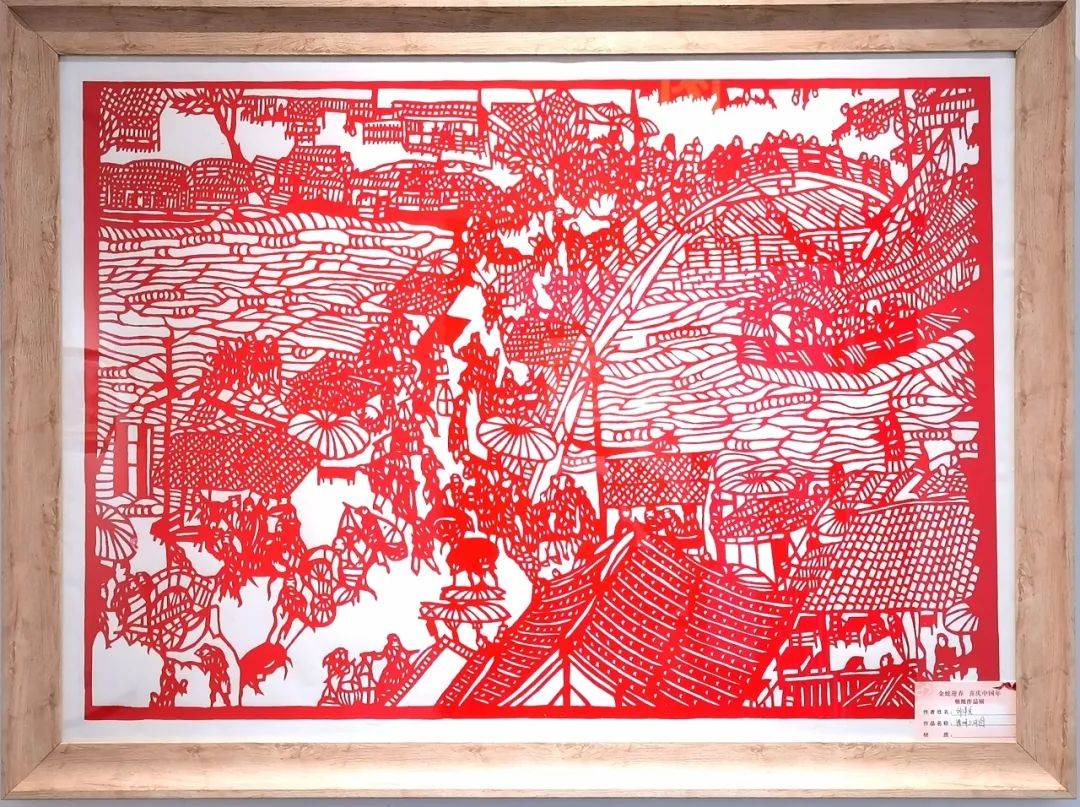The Dance of Scissors and Paper: An Ancient Art Form
For over 1,500 years, Chinese paper cutting (Jianzhi 剪纸) has transformed simple sheets of paper into breathtaking works of folk art. More than just decoration, these intricate cuttings represent:
- Cultural DNA of Chinese traditions
- Visual poetry telling stories without words
- Mathematical precision meeting artistic expression
From Shaanxi’s rugged loess plateaus to Guangdong’s subtropical coast, each snip of the scissors carries centuries of meaning.
The Three Pillars of Paper Cutting Mastery
1. The Magic of Symmetry
- Fold-and-cut technique: Single sheets transformed into mirrored designs
- Radial symmetry: Circular patterns unfolding like snowflakes
- Mathematical beauty: The same principles found in Islamic geometric art
Pro Tip: Beginners should start with simple “double happiness” (囍) characters to understand symmetry fundamentals.
2. The Language of Hollows
- Positive vs negative space: The art of what’s removed matters as much as what remains
- Three-dimensional illusion: Layered cuttings create depth on flat surfaces
- Breath-taking delicacy: Some masters create cuttings with hair-thin connections
3. The Poetry of Themes
Every motif carries profound symbolism:
| Design | Meaning | Regional Style |
|---|---|---|
| Fish | Abundance | Shaanxi (bold curves) |
| Peony | Wealth | Hebei (delicate petals) |
| Dragon | Power | Zhejiang (whirling patterns) |
| Baby | Fertility | Fujian (whimsical shapes) |
A Geographic Tasting Menu of Styles
Northern (粗犷) – Bold and Heroic
- Representative: Shaanxi, Shanxi
- Traits:
• Thick lines withstand winter winds
• Red ochre paper mimicking cave paintings
• Themes: Loess Plateau life, mythical beasts
Eastern (精致) – Delicate as Silk
- Representative: Jiangsu, Zhejiang
- Traits:
• Rice-paper thin connections
• Multiple layered colors
• Themes: Water towns, opera characters
Southern (灵动) – Playful Spirits
- Representative: Guangdong, Fujian
- Traits:
• Curvilinear compositions
• Metallic foil accents
• Themes: Ocean creatures, banyan trees
The Artist’s Toolkit: From Folk Craft to Fine Art
Traditional Tools
- Sheep-gut scissors: Spring-loaded for precision
- Bamboo knives: For micro-carvings
- Dye pots: Creating gradient effects
Modern Innovations
- Laser cutters: For architectural-scale installations
- UV-resistant inks: Preserving outdoor displays
- Augmented reality: Making static cuttings “come alive”
Breathing New Life Into Ancient Patterns
Contemporary artists are redefining traditions:
- Chen Jing‘s feminist reinterpretations of bride motifs
- Li Xiaodong‘s political satire cuttings
- Guo Xiaoxian‘s giant paper installations in Paris galleries
Did You Know? The 2008 Beijing Olympics used paper-cut motifs in all medal designs.
Your First Paper Cutting: A Starter Guide
- Choose Your Weapon
• Beginners: Small embroidery scissors
• Advanced: Swivel-blade precision knives - Paper Matters
• Training: Newspaper stacks
• Formal work: Xuan paper (same as calligraphy) - Master These 6 Basic Cuts
• Phoenix eye (curves)
• Willow leaf (points)
• Cloud head (spirals) - Avoid These Common Mistakes
• Overcutting delicate areas
• Ignoring grain direction
• Rushing the unfolding
Why Paper Cutting Still Matters in the Digital Age
In our screen-dominated world, this tactile art:
- Preserves vanishing folk stories
- Teaches patience and focus
- Creates mindfulness through repetition
- Connects generations through shared making
From rural village windows to New York art galleries, these paper whispers continue telling China’s story.
Have you ever tried paper cutting? Share your experiences below!
Coming next: The secret codes in Chinese knot art – decoding the knots that saved lives! ✂️🏮
